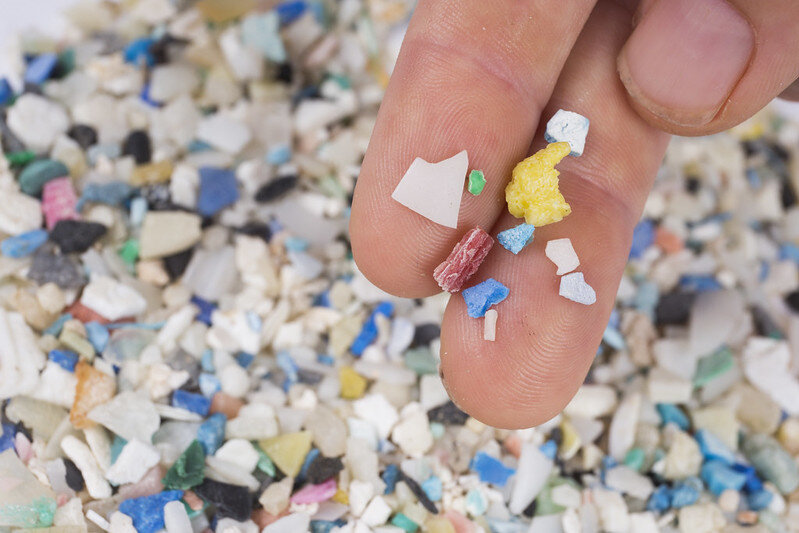Microplastics, Explained: What they are and why they're a problem
Photo credit: Florida Sea Grant, CC BY-NC-ND 2.0
“Save the turtles, don’t use straws!”
You might have overheard this or a similar eco-friendly phrase throughout the past few years, spoken by a well-meaning citizen who saw a frightening post or article and now carries a reusable straw everywhere they go. Laptop stickers, “green products,” celebrities – everyone now seems to recognize that plastic pollution is increasing, especially in the oceans, and causing damage to important ecosystems. An essential piece of this plastic pollution puzzle is the existence of microplastics, a term first used in 2004. Research about microplastics is fairly new and much is still unknown, but current studies about these minuscule pollutants are showing some disturbing trends that should not be overlooked.
What makes a plastic a “microplastic?” NOAA, the National Oceanic and Atmospheric Administration, defines microplastics as plastic debris less than 5 millimeters in length, about the size of a sesame seed. There are two categories of microplastics: primary and secondary. Primary microplastics are those particles that were originally manufactured at a size less than 5 millimeters, such as microbeads used in cosmetic products. Secondary microplastics are those that have been broken down from macroplastics, such as fishing gear or plastic bottles. One problematic trait of these plastic particles is their slow breakdown – some plastics can take hundreds of years to degrade. Furthermore, these hardy microplastics are so tiny that they are able to pass through water filtration systems into natural bodies of water.
Although these microplastics are small in size, the problems they pose to ecosystems are not insignificant. Organisms of all sizes easily consume microplastics that enter bodies of water. Once they enter the food web, these microplastics are then spread through food chains, and they bioaccumulate – so, if you eat something that ate a microplastic, you have now also consumed that microplastic. While scientists are still investigating the harms of wildlife eating microplastics, initial reports by UNEP and PNAS suggest eating these particles “may cause reduced activity rates, reproductive disruption, weakened schooling behavior and altered feeding behavior” in marine creatures. With microplastics causing damage at all levels of trophic systems, they have the potential to cause serious harm to marine ecosystems.
Recent studies indicate that even humans might now be consuming microplastics somewhat regularly. Already microplastic content has been noted in seafood, salt, honey, sugar, tap water and bottled water. With microplastics making their way into human diets, we must consider the potential health implications of eating and drinking small plastics. Few studies have definitively stated the human health impacts of microplastic pollution. However, the available information has been used to make some predictions, which entail a laundry list of harmful consequences. Respiratory issues, cardiovascular disease, asthma, cancer and obesity are all potential threats to human health directly or indirectly caused by microplastics.
So we know that microplastics are a prolific pollutant, harm organisms and ecosystems and probably endanger human health. How can we begin to prevent the damage that microplastics are doing to our planet? The most effective changes would be structural changes to reduce societal use of plastic. In 2017, the United Nations passed a resolution about the need for regulations that would address and reduce the output of microplastics. Microbeads have been banned in the US, the UK and Canada. Further cooperation between scientists and policy makers will hopefully lessen the impacts that microplastics are having on our ecosystems and our health.
If you want to make positive changes in your personal life, the Friends of the Mississippi River offer some suggestions on their website. Potential actions include:
1. Reducing, reusing, and replacing plastics in your life
2. Recycling
3. Participating in a river cleanup
4. Talking to your political representatives
5. Spreading the word
Undertaking individual action while calling for and promoting collective action is a winning combination for the reduction of microplastic pollution.

